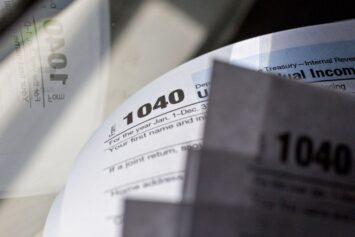The Internal Revenue Service (IRS) has officially announced that it will begin accepting and processing tax returns for the 2024 tax year on Jan. 27. With over 140 million individual returns expected to be filed before the April 15 deadline, taxpayers are gearing up for the season by organizing documents and considering filing options.

When Can You Start Filing?
If you’re using a tax professional or software, you can prepare your taxes now, as some platforms accept early submissions and hold them until the IRS begins processing.
For those opting for the new Direct File pilot program, residents in 25 states can file federal returns for free directly with the IRS, starting Jan. 27. This year, the program includes features like importing IRS data directly into tax forms; this is a way to streamline the process for eligible filers.
How Long Will It Take to Get Your Refund?
For many Americans, tax refunds represent the largest check of the year. The IRS stated that most refunds are issued within 21 calendar days for taxpayers who file electronically and opt for direct deposit. So if a filer who submits their return on Jan. 27 they could potentially receive their refund by Feb. 17.
If you file a paper return, expect a longer processing time. Paper filers may need to wait at least four weeks before their return status appears in the IRS’s Where’s My Refund? online tool.
Refund Delays for Certain Credits
Taxpayers claiming the Earned Income Tax Credit (EITC) or Additional Child Tax Credit (ACTC) should expect delays due to additional identity verification measures required under the Protecting Americans from Tax Hikes (PATH) Act. Refunds for these filers will not be issued before mid-February, with most being available by Feb. 27, if there are no issues with the return.
Tips for a Smooth Tax Filing Season
The IRS recommends filing electronically and opting for direct deposit to ensure the fastest refund. Here are a few additional tips to make the process smoother and faster:
- Organize Documents: If you are claiming deductions, make sure to have your recipts and paperwork gathered.
- Check Accuracy: Double-check all information to avoid processing delays or additional IRS notices.
- Track Refunds: Use the Where’s My Refund? tool on the IRS website or the IRS2Go app to monitor your refund status.
Expanded IRS Services and Tools
To enhance taxpayer experience, the IRS has rolled out several improvements:
- Enhanced Where’s My Refund? tool: Offers refund status updates.
- Expanded Taxpayer Assistance Centers (TACs): There are more locations and extended hours.
- New digital features: Taxpayers can now submit all correspondence and certain forms online, reducing reliance on paper submissions.
Key Dates to Remember
- Jan. 27: Tax season officially begins.
- Feb. 17: Updated refund status for EITC/ACTC filers available on Where’s My Refund?
- Feb. 27: Most EITC/ACTC-related refunds expected to hit bank accounts.
- April 15: Deadline to file federal taxes or request an extension. Residents in Maine and Massachusetts have until April 17 due to holidays.




